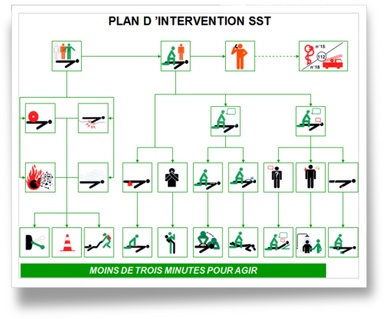|
|

|
|

|
Download in progress...
Please wait until the complete download of this web page
|
|
X
|
FIRST AID |  French Training of Rescuers at work. |
| |  INRS offers training and upgrading courses to first-aid at work instructors. These then teach first-aiders within companies, in compliance with the national programme defined by INRS and validated by CNAM. INRS offers training and upgrading courses to first-aid at work instructors. These then teach first-aiders within companies, in compliance with the national programme defined by INRS and validated by CNAM. |
|  Training of Rescuers at work. |
| |  Emergency First Response is one of the fastest-growing international CPR, AED and first aid training organizations. With more than 56,000 instructors worldwide, Emergency First Response is backed by 48 years of experience in the development and delivery of instructional courses, training materials and educational curricula. Emergency First Response is one of the fastest-growing international CPR, AED and first aid training organizations. With more than 56,000 instructors worldwide, Emergency First Response is backed by 48 years of experience in the development and delivery of instructional courses, training materials and educational curricula.
Emergency First Response courses have widespread international acceptance.
Every day, in more than 175 countries around the world, Emergency First Response Instructors help communities prepare for disaster by training community members to respond to medical emergencies when emergency services are delayed or unavailable.
Emergency First Response courses follow the emergency considerations and protocols as developed by the members of the International Liaison Committee on Resuscitation (ILCOR). Members include American Heart Association (AHA), European Resuscitation Council (ERC), Australian Resuscitation Council (ARC), New Zealand Resuscitation Council (NZRC), Heart and Stroke Foundation of Canada (HSFC), Resuscitation Council of Southern Africa (RCSA), Inter American Heart Foundation (IAHF), Resuscitation Council of Asia (RCA – current members include Japan, Korea, Singapore, Taiwan).
Primary Care (CPR) and Secondary skills taught in this course :
- Scene Assessment
- Barrier Use
- Primary Assessment
- Cardiopulmonary Resuscitation (CPR)
- Serious Bleeding Management
- Shock Management
- Spinal Injury Management
- Conscious and Unconscious Choking Management.
- Automated External Defibrillator (AED) Use
- Emergency Oxygen Use.
- Injury Assessment
- Illness Assessment
- Bandaging
- Splinting for Dislocations and Fractures
Includes first aid treatment reference for the following emergencies :
Allergic Reactions (incl. anaphylaxis), Asthma, Bruises, Burns, Chemical Burns, Choking (adult, child, infant), CPR (adult, child, infant), Cuts, Dental Injuries, Diabetic Problems, Dislocations and Fractures, Electrical Injuries, Eye Injuries, First Aid Kit Assembly, Fish Spine Injury, Frostbite, Heat Exhaustion, Heatstroke, Heart Attack, Hypothermia, Insect Stings, Jellyfish Stings, Octopus Bites, Poisoning, Scrapes, Seizures, Snake Bites, Spider Bites, Sprains and Strains, Stroke, Temperature Related Injuries and Venomous Bites and Stings. |
|  Tactical Emergency Casualty Care Training. |
| | | Tactical Emergency Casualty Care (TECC) is a set of evidenced-based and best practice trauma care guidelines for civilian high-threat pre-hospital environments. The TECC guidelines are built upon the critical medical lessons learned by US and allied military forces over the past 15 years of conflict and codified in the doctrine of Tactical Combat Casualty Care (TCCC). Using the military TCCC guidelines as a starting point, the Committee creates the civilian high threat medical guidelines through a process of literature research, evidence evaluation, expert discussion, and civilian best practices review. The TECC guidelines are built upon the foundations of TCCC but are different to meet the unique needs of the civilian medical and operational environments. The differences address civilian specific language, provider scope of practice, population, civilian liability, civilian mission and operational constraints, logistics, and resource acquisition. |
|
|
|
|
|